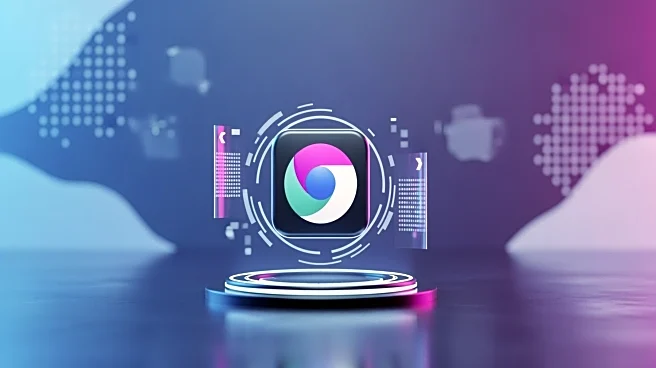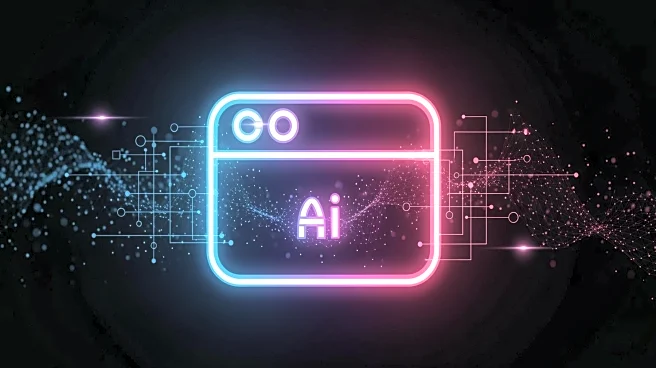What's Happening?
ChatGPT has introduced its AI-powered web browser, ChatGPT Atlas, aiming to compete with Google Chrome's dominance in the search engine market. The new browser combines traditional web browsing with AI capabilities,
allowing users to enter URLs and access websites while simultaneously interacting with a ChatGPT 'companion' screen. This feature enables users to ask questions about webpage content or search for deals directly. Additionally, ChatGPT Atlas offers extended functionality, allowing users to resume searches from weeks prior by retrieving relevant data and continuing their browsing journey.
Why It's Important?
The launch of ChatGPT Atlas represents a significant shift in the web browsing landscape, potentially altering how users interact with online content. By integrating AI directly into the browsing experience, ChatGPT Atlas could enhance user engagement and streamline information retrieval. This development may impact Google's market share, prompting competitive responses from other tech giants. For businesses, the AI capabilities of ChatGPT Atlas could offer new avenues for customer interaction and data analytics, influencing marketing strategies and consumer behavior.
What's Next?
As ChatGPT Atlas gains traction, industry stakeholders will likely monitor its adoption and performance closely. Tech companies may explore similar integrations to maintain competitiveness, while regulatory bodies could assess the implications of AI-driven browsing on privacy and data security. The success of ChatGPT Atlas could lead to further innovations in AI applications within web browsers, potentially setting new standards for user experience and digital interaction.
Beyond the Headlines
The introduction of AI-powered browsing raises ethical considerations regarding data privacy and the potential for AI to influence user decisions. As AI becomes more integrated into daily activities, discussions around transparency and accountability in AI operations may intensify. Long-term, this could lead to shifts in regulatory frameworks and public perceptions of AI technology.











